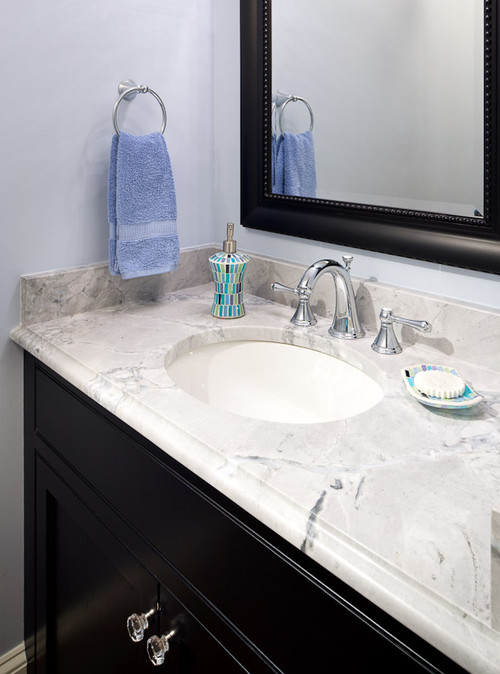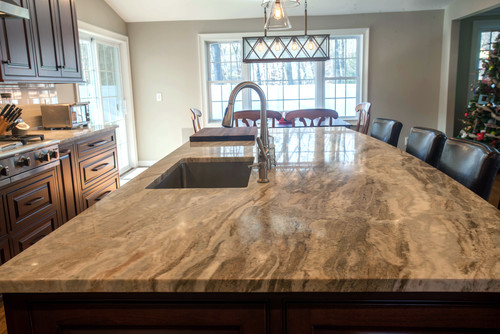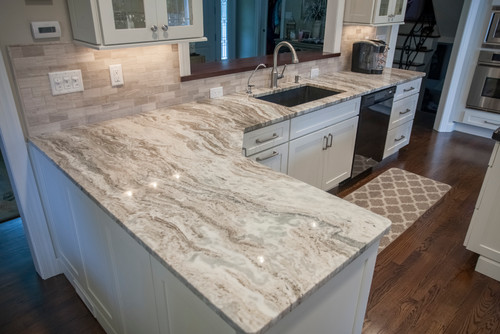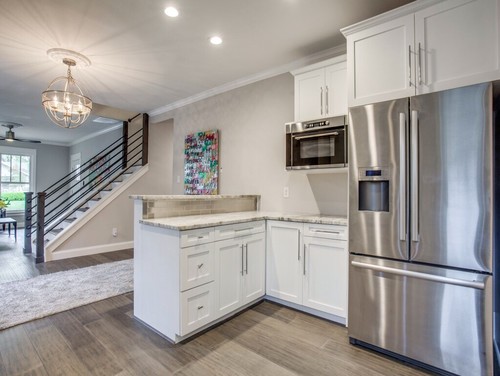Is Fantasy Brown Granite, Quartzite, or Marble?

The only potential problem with Fantasy Brown is the lasting debate about what type of stone it actually classified as. While it’s not abnormal to confuse certain strains of marble and quartzite with the naked eye, due to similar colors and patterns, marble and granite are typically much easier to distinguish from one another. So, why the debate? How can Fantasy Brown be considered by some to be marble, while others claim it should be classified as granite or quartzite?
We’re here to put the debate to bed once and for all. Despite having characteristics of all three types of natural stone, Fantasy Brown is, in fact, marble. Here’s what you need to know.
Why is Fantasy Brown Confused for Granite or Quartzite?
Marble, granite, and quartzite are often easy to distinguish from one another, thanks to distinctive colors, patterns and attributes like hardness. However, certain features may sometimes overlap. For example, certain varieties of marble and quartzite can feature similar colors and patterning.
The Super White quartzite used for this modern vanity, for example, looks an awful lot like the Calacatta marble shower stall in this traditional master bath below.
In addition, although granite and quartzite typically look nothing alike, they share similar resilience. Granite is considered a 6-6.5 on the Moh’s hardness scale, while quartzite is about a 7. By contrast, marble tends to fall somewhere between 3 and 5, making it softer and somewhat more susceptible to scratching, etching, and other damage.
Fantasy Brown marble, however, is harder than your average marble. It is more durable and scratch-resistant, and the fact that it has the look of some quartzite slabs means it is often easily confused for other types of stone.
What Makes it Marble?
With characteristics that skew toward quartzite and granite, it’s easy to see why this gorgeous stone is often confused for its countertop counterparts. So, what exactly puts Fantasy Brown squarely in the marble category? It has to do with how this glorious metamorphic rock is formed.
All marble starts out as sedimentary limestone and goes metamorphic when exposed to high pressure and temperature over time. During this process, the calcite that forms the limestone is recrystallized in a denser form, creating marble, with varieties dependent on impurities present during metamorphosis (which alter color and pattern). Fantasy brown, which is quarried in India, also undergoes a dolomitization process, which is responsible for its harder-than-normal composition.
Quartzite is a sedimentary rock, like marble, but it forms when sandstone and quartz are fused under exposure to heat and pressure. While granite also has some quartz content, it is actually an igneous rock that forms when magma cools and crystallizes beneath the Earth’s surface.
What does all of this mean? In short, if you understand the makeup of these three different types of natural stone, it makes it more difficult to confuse them. That said, the average homeowner isn’t taking stone samples to a lab to discover their makeup, and even many interior designers recommending Fantasy Brown are apt to call it quartzite or granite.
All you have to do is search for “Fantasy Brown quartzite” to find endless samples, like the island in this New York kitchen, or the counters in this traditional galley kitchen below.
It’s equally easy to find samples of Fantasy Brown mislabeled as granite, as with this transitional kitchen below.
While it is possible that these are actually different varieties of quartzite or granite that have been mistaken for Fantasy Brown marble, it’s more likely that they are, in fact, marble. Why? Because Fantasy Brown is an incredibly distinctive variety of stone, so when you see it, you can rest assured, it is a marble.
Why is it so Important to Understand that Fantasy Brown is Marble?
There’s just no mistaking the calcite content that makes Fantasy Brown a type of marble, and nothing else. So, when you see Fantasy Brown advertised as quartzite or granite, just know that it’s still considered a marble stone due to its stone formation.
This is important for one very specific reason: it’s not as hard as these other stone types. While Fantasy Brown is harder than typical marble varieties, all that makes it is a hard marble, which means it can still be damaged more easily, if you’re not careful. In other words, you should always err on the side of caution, treating it as you would other marble, despite greater hardness. To treat it as granite or quartzite could lead to damage you’d rather avoid.
Can Academy Marble help?
With professional help, you can choose the countertop that matches your aesthetic preferences and complements the rest of your home, and after installation, we can help you properly care for your investment so that you can enjoy it for years to come. Contact us today to get started on your project.







